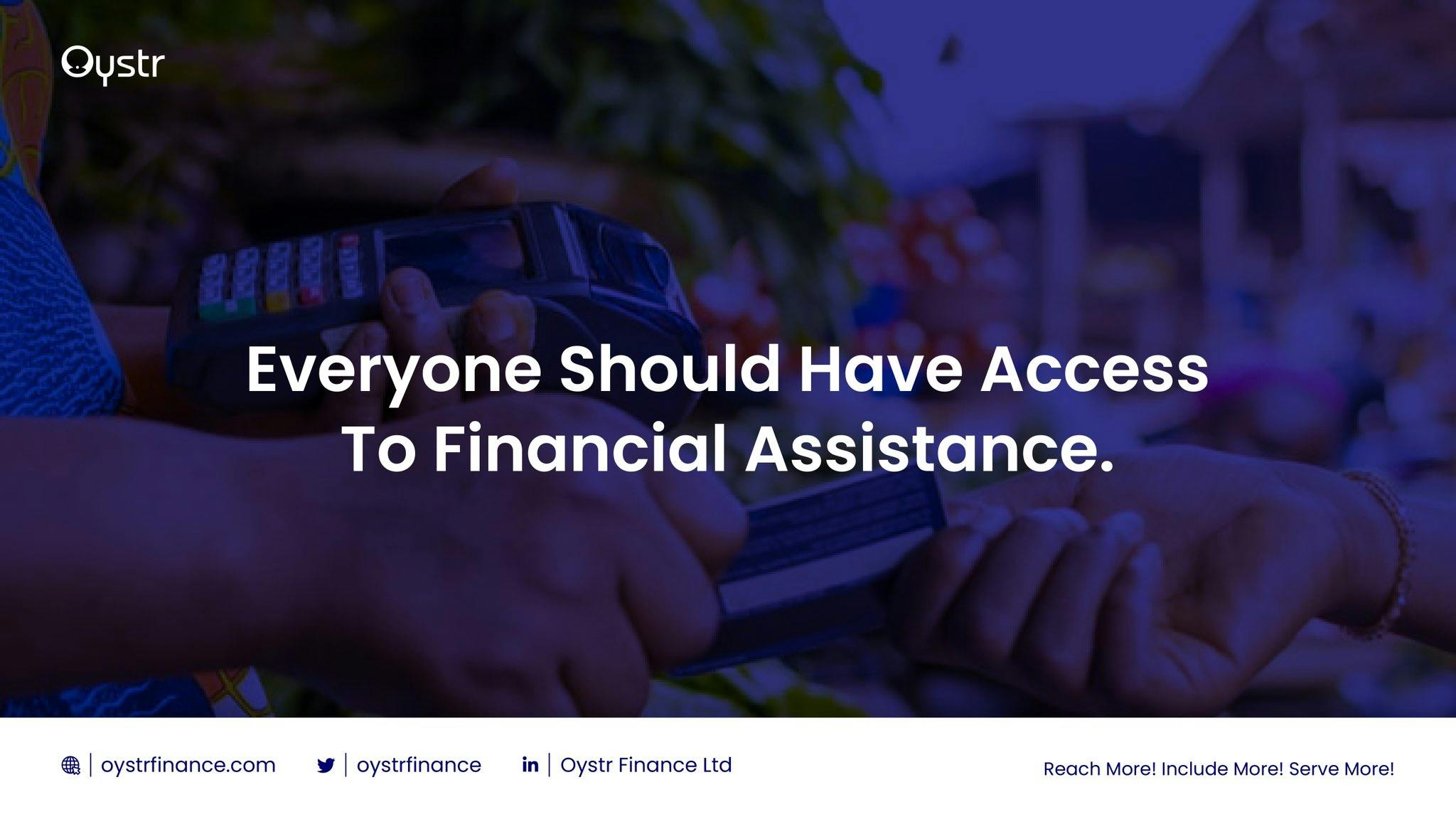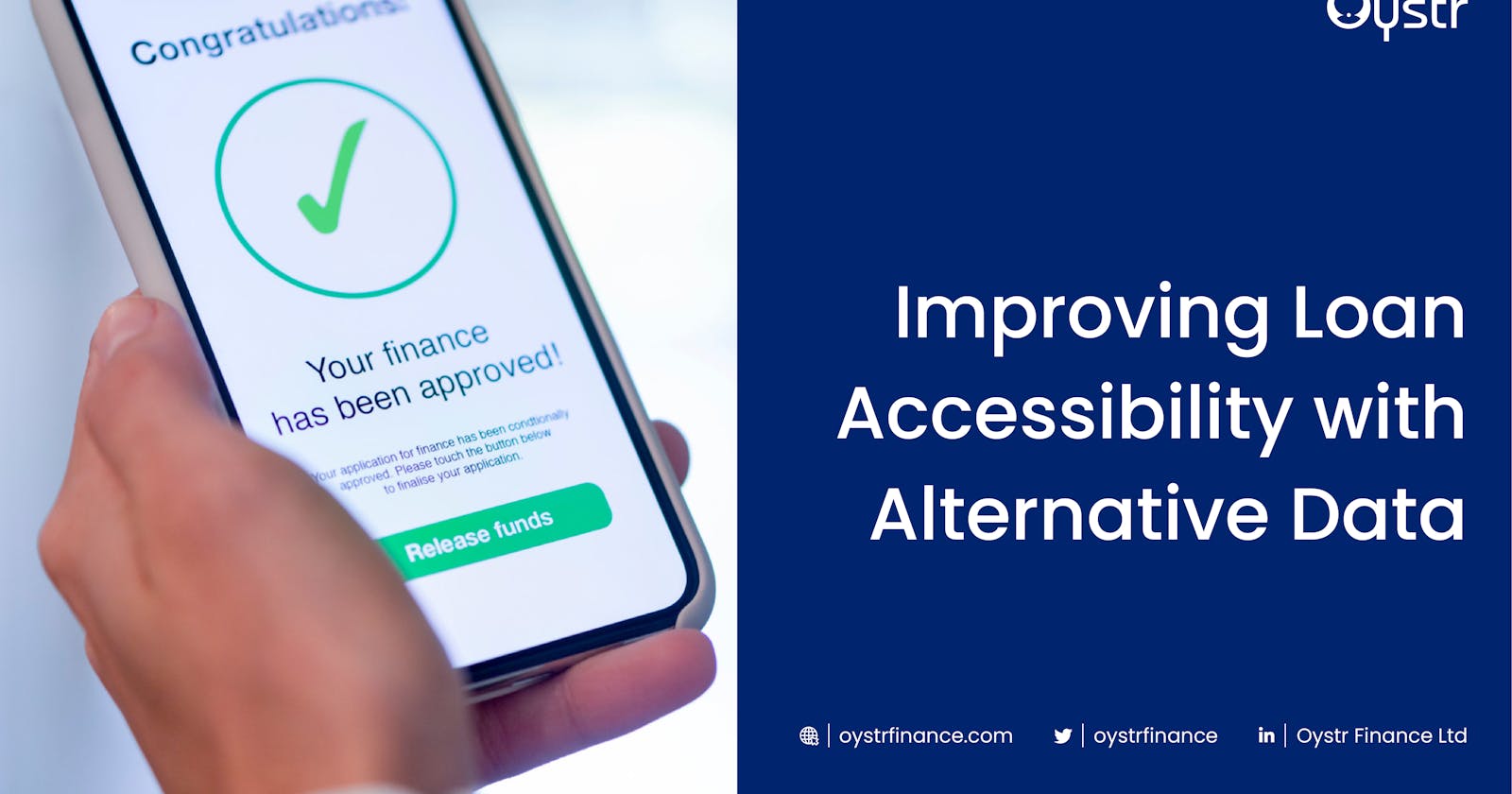Everyone deserves access to financial assistance but lenders face serious issues in determining prospects' creditworthiness. Risk becomes greater in providing a credit facility to the unbanked since there is no financial history.
The traditional data used only provides a very narrow view of a customer's creditworthiness, which may leave them out of the credit window. Without the ability to aggregate financial alternative data, lenders miss important clues that may impact loan approval
However, Financial institutions can make informed decisions when it comes to lending with alternative data.
Utilizing financial alternative data poses a better view and provides an accurate credit limit. The use of such data provides a more comprehensive view of a customer's credit life and can result in higher risk-adjusted financial outcomes.
Alternative Data and Loan Grant
Alternative data is information that is used by financial lenders to provide loans to applicants who have no credit history and who have been rejected for loans by traditional financial institutions such as banks and credit unions. Alternative data is also information that is used by alternative lenders.
When deciding whether or not to grant a loan, the vast majority of modern lenders today look to alternative data. Throughout the entirety of the lending lifecycle, this data is utilized to ensure that consistent returns are generated from loan disbursements.
Better than Traditional Data for Loan Accessibility
In the past, all lenders depended on credit files maintained by several different credit agencies when making decisions regarding the disbursement of loans.
These files contain relevant information about individuals' track records regarding the repayment of previous debts that they may have incurred.
On the other hand, the data used to determine traditional credit scores are flawed. There is a significant demand-supply gap for loan products and their associated services as a direct result of the limitations of using traditional data for the evaluation of loans.
The majority of applicants do not get loan opportunities because they do not have a credit history. This lack of credit history can be the result of several different factors.
Relatively, alternative data is information that has resulted in a significant change in the amount of credit that is made available to unbanked and underbanked individuals. Throughout the course of the event, it will be utilized for a variety of purposes. It is leveraged throughout the entire life cycle of the loan for many different purposes.
Examples of alternative data include non-credit information such as insurance payments, utility payments, rental payments, public records, and property records.
How the Utilization of Alternative Data Can Make Loans More Accessible
In highly competitive lending markets, financial institutions compete with one another to attract new types of borrowers who are eligible for loans and to offer the most favorable loan terms possible.
Non-traditional lending institutions have come to this conclusion as a result of the fact that a wide variety of data does not fall under the category of credit score data, which is typically dispersed throughout the loan life cycle.
Creates a Simple Evaluation Process
When evaluating a loan application with no or insufficient credit history, using alternative data makes the evaluation process straightforward.
By drawing from a variety of alternative data sources, lenders can develop a comprehensive history of the borrower's past and current financial activities.
This information has the potential to be a significant component in the evaluation of a loan application.
Reduces Risks
These details are utilized by lenders for a wide range of tasks, such as marketing, account monitoring, loan disbursement, and even collection.
Alternative data helps lenders significantly reduce the number of fraudulent loan applications they receive, which in turn lowers the amount of money they lose on loans.
Alternative credit data can not only provide a predictive aid when there is no previous data to analyze a loan application, but it can also help in identifying risky concepts.
This is because alternative credit data is based on more recent information. Alternative data are now being used by lending institutions to increase the number of customers they serve.

Accessing Creditworthiness
By utilizing alternative data from a wide variety of sources, a lending institution can determine whether or not a candidate with no credit history is qualified for a loan. By signing up a greater number of customers and utilizing alternative data, lenders can increase their returns by a significant amount.
Evaluation of a loan application by using alternative credit scores provides the potential for a significant increase in ease, swiftness, and simplicity that may be utilized by a lending company.
A customer's digital footprints, full-file public records, and banking accounts are just some of the places where a lender might find information about a client to use in lending decisions.
An applicant who does not have a credit history may be required to provide supporting documentation, such as account information from banks, credit cards, investments, and mobile phones, when they submit their application.
Comprehensive Assessment
It makes use of technology to evaluate a wide variety of alternative aspects. This includes transaction history, repayment history, bank balance, eCommerce shopping, trip size, and spending trends.
Using the applicant's digital footprint, which includes their activity on social media, mobile devices, and the internet, to determine whether or not they are creditworthy.
The Advantages of Utilizing Alternative Data to Obtain Loans
Alternative data are used to evaluate not only a customer's ability to pay but also their intent to pay and their financial stability.
Consider the following important advantages of making lending decisions based on alternative data when the applicant has no credit history:
Exploring Uncharted Geographic Areas
A financial lending organization that makes use of alternative credit score data may be able to increase its market penetration while simultaneously lowering its risk of fraud.
Traditional lending companies make it challenging for individuals who do not have sufficient credit histories to obtain loans. This includes individuals who are students, have dependent spouses, are pensioners, are immigrants, and others.
They can also be approved for loans by using other data that is used to determine their credit ratings, such as their patterns of bill payment and expenditures.
A More Accurate Measurement of Creditworthiness
When traditional data and alternative data, such as credit score data, are combined, a more complete picture of a person's creditworthiness can be obtained.
Using alternative credit rating data, it is much simpler to predict which applicants will be able to repay a loan on time.
Lending companies can make more informed decisions with the assistance of data such as monthly invoices, patterns of payment, and employment information.
Access to Credit Opportunities for the Unbanked/Underserved
In today's world, a sizable portion of the population does not have a bank account or has an inadequate one.
They are not eligible for the standard creditworthiness evaluation when they apply for a loan because they do not have any previous credit records. This section of the population can qualify for a loan thanks to the utilization of alternative data during the evaluation process.
Lending institutions can provide individuals who lack the necessary appropriate background information with responsible access to lending products.

Extends The Process of Insurance Coverage Underwriting
Standard underwriting procedures might be augmented by additional data points or variables resulting from alternative credit scoring if lending companies choose to do so.
Variables such as banking transaction behavior, credit card payback, late payment, promptness in paying monthly bills such as telecom, utility, or cable bills, and work history all contribute to increasing the underwriting process because they show credit risk minimization.
Utilizes Real-Time Data
Real-time information is used in alternative credit scoring, in contrast to traditional scoring methods which use information from the borrower's credit history, which can have a negative impact on the borrower's credit score for some time after the event. Lending companies can benefit from more timely information.
Conclusion
Several different financial institutions are increasingly using alternative data when assessing the creditworthiness of potential borrowers.
Not only does this type of financial information support traditional credit reports, but it also adds additional aspects to them, such as lifestyle, interests, spending patterns, and so on.
Lenders can also gain detailed insight into an individual's credit status, payment patterns, and salary flows with the help of advanced data analytics. This allows them to better assess an individual's creditworthiness while simultaneously expanding their applicant pool to include "credit Invisibles."
Lenders have only scratched the surface of what could potentially be a goldmine of alternative data sources that can be utilized for lending reasons at this point.
Companies that are willing to embrace alternative data solutions to improve upon more traditional methods of credit risk assessment will undoubtedly succeed in the future.
Oystr Finance is the largest alternative data infrastructure. We're meeting the needs of financial operators and by large helping in serving the underserved.

